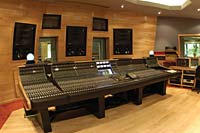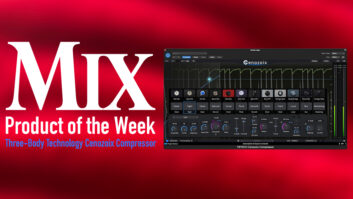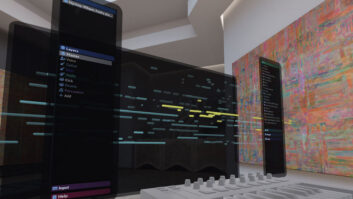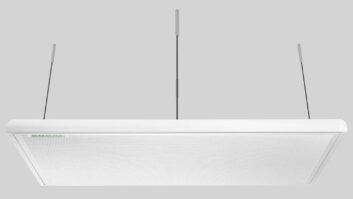
BASIC LAYOUT
There is something reassuring when a new console with a lot of fresh
bells and whistles still looks familiar. That’s the impression I got
from API’s Vision surround console. Between the meter bridge and the
armrest, there is a mix of tried-and-true discrete API components,
along with some new innovations that differentiate the Vision from its
predecessor: the Legacy Plus. API’s intent was to address what it felt
were the shortcomings of surround consoles currently on the market.
API’s Dan Zimbelman sums it up: “We debated LCR versus LR
panning, sends versus center pan output, LFE filtering and how to
address surround effects returns. We’ve come up with some innovative
results while maintaining the API standard of sonic integrity and
quality of build.”
While API may have redesigned the cart, the company has not
re-invented the wheel. The console is laid out in 16-channel buckets,
along with a center section, allowing buyers to design their own custom
layout in multiples of 16 channels. Just below the meters, Vision
borrows from the Legacy Plus with two stacked slots in which any 200
Series module can fit, including the 212L mic preamp, 225L compressor,
235L noise gate, 205L direct input or 215L filter module. Below that is
the bus-assign matrix, followed by the EQ section, which can fit either
a 550L or the slick-looking new 560L graphic EQ with the slanted
sliders. Further south is the input section comprising the 10 aux
buses, channel fader (“Fader 2” in API-speak), panning
section and Fader 1 (monitor fader).
WHAT’S NEW?
The center section — from the top down — begins with 7.1
metering, followed by a built-in, 17-inch LCD monitor; 24 multitrack
bus trims; and the individual and overall cue send masters. Closer to
the operator, various essentials are arranged, such as the folddown
matrix, oscillator, monitor panel, solo master, individual monitor solo
and cut controls, talkback, the stereo and surround master faders and
automation controls.
Right off the bat, the twin 100mm faders on the input section catch
your attention; no fader on the console is smaller than that. Each
fader has an insert and trim capable of +17 dB of additional gain and
both carry a highpass filter, one fixed and one variable. Surround
panning is achieved via three independent pan pots that address LCR/LR,
front/rear and SL/SR.
The bus-assignment section is 16 channels wide and sits across each
bucket. It comprises a multitrack bus-assign section, stereo/5.1 bus
assignment for Faders 1 and 2 and a Clear button on the far right. To
assign a bus, you simply make your choices, adding pan if needed, and
then choose the Set button on any channel. This results in your chosen
setting being dumped to that channel. This operation can also be
performed across a range of channels or the whole console from the
center-section’s LCD screen.
The center-section’s LCD screen is command central for a number of
functions, including mix storage and recall, offline editing, group
assignments, snapshots and setups. These are stored on a standard PC
running Windows, but this PC has nothing to do with the automation. As
for automation (aptly titled Vision), all faders and switches on the
input and output sections are automated and can be instantly reset. The
system uses localized micro-controllers and a master control board that
interfaces the timecode and machine-control commands. This means that
the console holds mixes even when the control computer host is
offline.
THE BOTTOM LINE
Some other nice extras include a front/rear-channel flip button,
which puts the rear in the front and vice versa. An L/C/R/SL/SR button
to LFE takes a feed from the five channels and sends them to an LFE
filter card, which generates an LFE signal from the rest of the
channels. A CR Test Points section on the center section provides
access to each control room output, facilitating the alignment and
balance of the room’s surround system. One surround essential is the
optional surround return section, which occupies two 200 Series slots.
It features a 5-channel panner, LCR on, module on, level pot, solo,
solo safe, phase-invert switches and a space-control pot, which adjusts
the width of the image.
As you would guess, pricing is based on size and options, but
according to Zimbelman, an 80-channel Vision will price around $500k,
depending on the fit and range of modules. This equates to about 15% to
20% more than a similarly sized Legacy Plus. As I was writing this
piece, API had just shipped the first desk to Galaxy Studios in Belgium
(www.galaxystudios.be). I didn’t have any hands-on
time with the console, but from my experience with the Legacy and other
API gear, it certainly must be something any surround production house
would be proud to own. If you’re at AES in New York, stop by booth #547
or demo room 2D08 to learn more, or visit the company at www.apiaudio.com.





